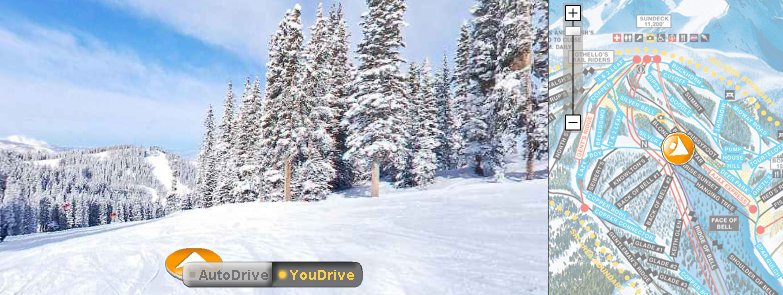
On the heels of its $7 million B round last month, 3-D mapping provider Everyscape, announced today that it will expand its coverage to San Francisco, Philadelphia and Washington, D.C. It now covers 15 total cities including its first batch, Boston, New York, Aspen and Miami.
I spent some time this morning talking with a reporter about Everyscape’s growth so far, and what sets it apart. The company most notably covers building interiors, which not only adds a dimension of appeal to users, when compared with Google’s Street View and Microsoft’s Virtual Earth 3-D, but also advertisers. This has particular applicability to certain categories of local advertisers, such as restaurants and real estate, as well as travel (think hotel room bookings).
The challenge here, as it often is in local, is wrapping your arms around a large and fragmented base of local advertisers. One strategy for Everyscape will be to find single points of entry to larger sources of business, such as hotel chains or third-party travel sites.
One of Everyscape’s features, for example, is the ability to ski down Aspen mountain in the same way that you can drive down the street in other cities it covers (similar to Google’s recent offroading efforts). Though this was likely launched as a novelty, the monetization possibilities come into focus involving ski resorts and travel bookings.
Another important challenge is aggregating traffic. This could be a case in which the feature set is more valuable than the destination — the destination vs. distribution concept that has gained importance in local. Everyscape could do what others in this boat — most recently Krillion — have done to feed its data and functionality to other well-traveled destinations and augment its own traffic.
Given the fragmentation of users and advertisers (especially in local), partnerships to aggregate both will continue to be vital. Everyscape applies well to this formula in that its unique functionality will appeal to both local searchers and certain advertisers, if it can just reach them in larger numbers.
This Post Has One Comment
Leave a Reply
You must be logged in to post a comment.


Everyscape needs to allow other sites to use its content. Then take a perecentage of the sales that site brings in. This is a win-win for both businesses I think.